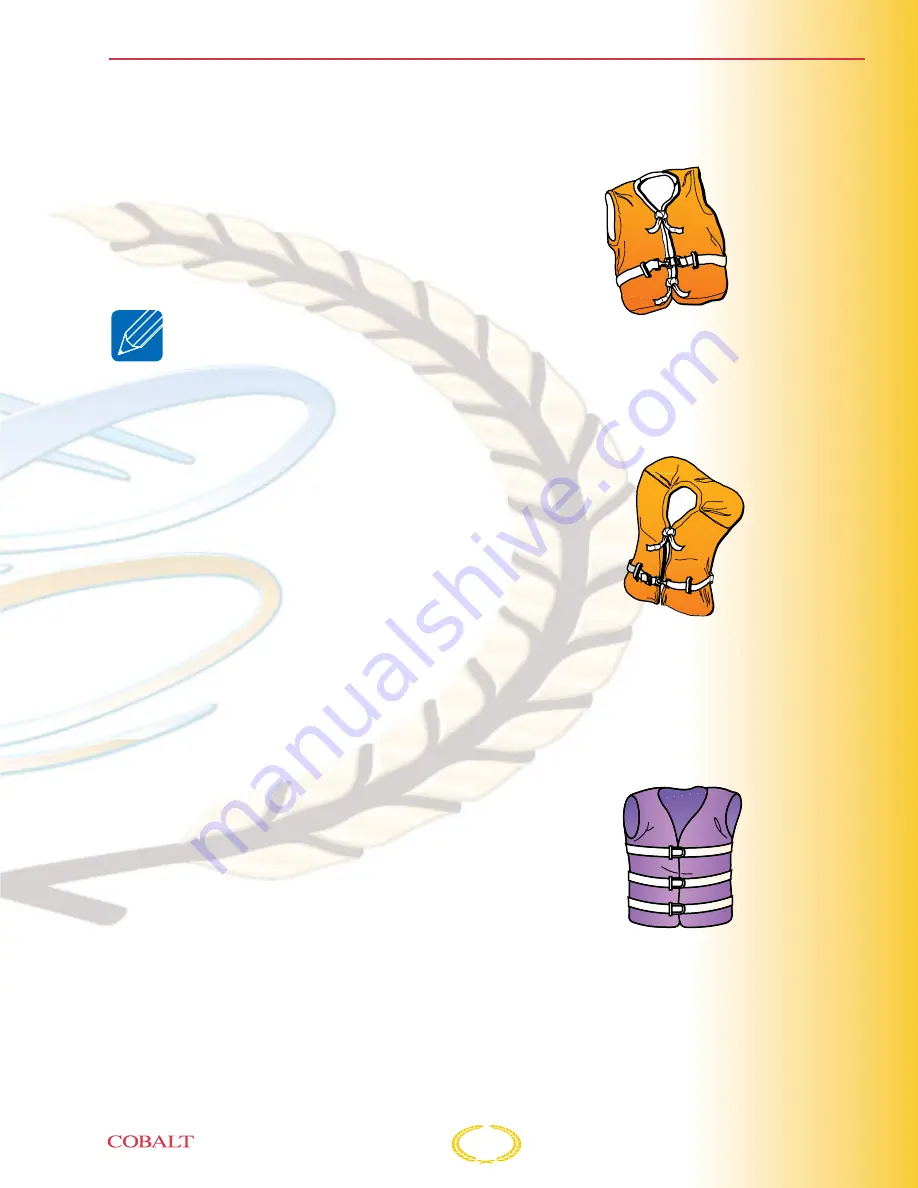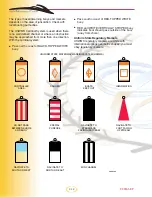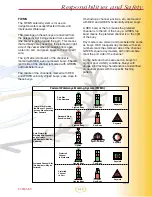
2-7
Distress Signals
Federal law also requires boats 4.8 m (16 ft ) and
longer to carry day and night visual distress
signals when operating on coastal waters, the
Great Lakes, territorial seas or those waters
directly connected to them, up to a point where
the body of water is less than two miles wide.
Carry several types of signaling devices to handle
a variety of conditions. Have enough signals on
board to last three days.
NOTICE: Some pyrotechnics are
restricted from use on certain bodies
of water, so check with local
authorities.
Radio Communication
Radio communication is the most important
avenue of receiving and sending information. Use
a VHF/FM radio for short-range communication,
and a single-sideband radio (SSB) for long-range.
For all U. S. waters, the National Weather Service
operates the NOAA Weather Radio (NWR). This
service provides continuous weather information
on the following VHF/FM frequencies:
●
162.400 MHz
●
162.500 MHz
●
162.425 MHz
●
162.525 MHz
●
162.450 MHz
●
162.550 MHz
●
162.475 MHz
Coast Guard Marine Information Stations
●
2670.0 kH
●
8765.4 kH
●
4428.7 kH
●
13113.2 kH
●
6506.4 kH
It is good practice to periodically monitor the
weather.
Life Saving Equipment
The following equipment may or may not be
required by federal/local regulations.
Personal Flotation Devices
Federal law requires at least one Type I, II, III, or V
Personal Flotation Device (PFD) for each person
on board or being towed, and at least one Type IV
throwable PFD in the boat.
There are four types of PFDs to wear and one
type used for throwing in emergency situations.
Type I Life Preserver: Most buoyant PFDs are
effective on all waters, especially open, rough
water.
Type II Buoyant Vest: Good for calm water near
shore on most inland waters where quick rescue
is likely.
Type III Flotation Aid: Good for most inland water
applications where quick rescue is likely. Comes in
various styles and some are designed for
watersport activities.
KC-0042C
TYPE III
FLOTATION AIDS
TYPE II
BUOYANT VESTS
KC-0051C
TYPE I
LIFE PRESERVERS
KC-0041C
Responsibilities and Safety
Summary of Contents for 360
Page 1: ...Owner s Manual ...
Page 36: ...2 22 ...
Page 74: ...3 38 ...
Page 108: ...5 14 ...
Page 111: ...6 3 SERVICE LOG Date Hour Reading Service Repairs Performed Checklist Forms and Index ...
Page 112: ...6 4 FUEL LOG Date Gallons Hours Gallons Hour Date Gallons Hours Gallons Hour ...
Page 118: ...6 10 ...
Page 119: ......
















































